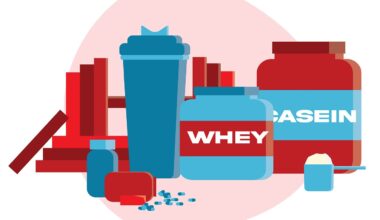Understanding the Metrics: What to Track in Your Fitness Resources
When managing fitness resources, tracking metrics is vital for progress. Proper resource utilization tracking can ensure your fitness goals are aligned with available assets. Start by segmenting resources into categories: time, physical equipment, facilities, and human capital. Assessing these categories can offer insights into how effectively resources are being used. Each metric should relate to both short-term and long-term objectives. For example, tracking hours spent at the gym versus the intended plan allows for analysis of adherence. Being meticulous in noting any deviations can highlight areas for improvement. By evaluating resources meticulously, you can adapt to changes or setbacks swiftly. It is also essential to measure user engagement with the available resources, ensuring they are frequently utilized. This encompasses examining attendance rates in classes or using workout equipment. Moreover, regular audits of your resource use can provide feedback on what’s working. Utilize surveys to gather qualitative data about member satisfaction. Ultimately, these strategies support continuous progress toward your fitness ambitions, enhancing both individual and group performance, which is crucial in any fitness setting.
Another critical element of resource utilization tracking is understanding costs. Every fitness program incurs various expenses including membership fees, maintenance costs, and equipment purchases. To effectively track these costs, establish a detailed budget before initiating any program. Include potential variable and fixed expenses to have a comprehensive view. Once you have that budget, contrasted with actual spending, you can gain insights into areas where you might be overspending or underspending. Analyze monthly reports to determine if you are staying within limits. Additionally, examine return on investment (ROI) for each program. Assessments allow for adjustments in resource allocation and ultimately help prioritize programs with more significant results. For example, if one fitness class drives participation but is high in cost, consider making adjustments that lower expense while attracting members. This process fosters strategic growth and sustainable practices for your fitness resources allocation. It’s equally important to recalibrate assessment strategies over time, adapting to changing dynamics in gym members or market trends. By monitoring these financial metrics closely, you can ensure that resources effectively serve your business goals.
Key Performance Indicators in Fitness
Identifying key performance indicators (KPIs) is essential when tracking progress in your fitness resources. KPIs help gauge how well your objectives align with utilization and overall success. Common KPIs in fitness include attendance rates, member retention, overall satisfaction scores, and class participation. By focusing on these specific metrics, you can determine what is resonating with your audience and what needs refinement. For instance, a surge in attendance grades could indicate successful marketing or new programs attracting interest. Conversely, a decline in retention may signal problematic areas needing immediate improvement. Establishing KPIs helps formulate actionable goals, driving accountability within your fitness team. It’s recommended to document progress in a centralized database where these KPIs are updated regularly. Visualizing this data allows for easier interpretation of trends over time. In addition, pairing qualitative data from surveys with quantitative KPIs can enhance understanding. Understanding the story behind the numbers can provide powerful insights. Ultimately, focus should be on aligning KPIs with the overall mission and vision of your fitness initiative, ensuring every decision is data-driven in pursuit of success.
Tracking resource utilization is also about assessing technology’s role in your fitness infrastructure. Digital tools can streamline monitoring through mobile apps or sophisticated management software. When implementing technology, it is crucial to evaluate user experience and interface quality. Engagement with these digital resources impacts the extent of tracking effectiveness. For example, look at how members interact with your online scheduling system. High bounce rates on online classes may indicate usability concerns. Alternatively, positive feedback can heighten the motivation to enroll in more classes. A pivotal aspect is ensuring that technology integrates seamlessly into current operations. Regular training sessions for staff and users can enhance comfort and effectiveness. Gathering analytics from digital resources can provide valuable insights into attendance patterns and resource utilization. Evaluating which times see the highest engagement can inform staff allocation and class scheduling. Moreover, technology can facilitate better communication between personal trainers and clients, enhancing progress tracking. These insights allow for fine-tuning of workout programs and interventions that promote client retention. Ultimately, leveraging technology is a strategic approach to enhance resource utilization tracking capabilities.
Enhancing Member Engagement
Engaging members is crucial in effectively tracking and utilizing fitness resources. The motivation behind resource consumption often comes from creating meaningful connections between members and trainers. One method to enhance engagement is through personalized fitness plans that align with individual goals. By assessing their activities, trainers can better guide targeted recommendations. Additionally, establishing scheduled follow-ups keeps members motivated and connected. Organizing community events such as competitions or open days can elevate excitement around fitness resources. This also encourages camaraderie among members fostering a greater sense of community. Incorporating gamification elements, like rewards for milestones, can further energize participation. A points system for attendance or achieving personal bests encourages members to stay committed. More importantly, these methods foster a culture of accountability and support within your fitness community. Seek to solicit ongoing feedback from members about their experiences to empower them in shaping the service. Communication channels like newsletters or social media groups can keep members informed, thereby enhancing involvement. Engaging your fitness community positively influences retention rates, ultimately supporting a thriving fitness ecosystem.
Lastly, the evaluation of resource utilization should extend to continuous improvement processes. A periodical review of your metrics and strategies can reveal areas needing adjustments and enhancements. Establish a timeline for conducting these reviews, ensuring they are conducted regularly, efficiently, and systematically. In doing so, your interventions will remain proactive rather than reactive. Analyze trends over time, looking for consistency or change in participation and satisfaction scores. Program adjustments based on evaluations also enhance the members’ experience. Involving staff in the review process supports a culture where everyone feels invested in the outcomes. Consider implementing brainstorming sessions where team members can suggest ideas based on recent data. Engaging the entire workforce in shaping the fitness programs leads to innovations that resonate with the member base. Ongoing education opportunities help staff to stay well-informed about the latest industry trends. This approach not only supports resource utilization but also fosters a knowledgeable team equipped to handle client inquiries. In the long term, these changes yield improvements in both member satisfaction and program effectiveness.
Conclusion: The Path Forward
In conclusion, effectively tracking and monitoring fitness resources is essential to success in any wellness initiative. Establishing metrics such as KPIs, engagement statistics, and financial assessments creates a comprehensive view of resource utilization. Evaluating these facets allows for better decision-making regarding resource allocation, aiding in overall business health. Engaging members adds another layer of effectiveness, intertwining personal motivation with strategic goals. Continuous assessment ensures that adjustments are made where necessary, fostering a culture of responsiveness. Moreover, leveraging technology and gathering consistent feedback promotes a transparent environment where everyone feels valued. In this evolving industry, adapting to trends and actively listening to your fitness community can set you apart from others. Aligning your program’s offerings with member expectations while emphasizing continual growth and improvement drives success. Remember, resource utilization tracking is not a one-time effort but a sustained process that requires diligence and commitment. Each metric assessed reflects the potential for greater community health and vitality, laying a solid groundwork for the future. Ultimately, continuously employing these strategies guarantees that your fitness resources remain aligned with member needs and organizational goals.


